Days In The Wild - Big game Hunting podcast
John Stallone Interviews Hunting Pros to get inside hunting tips and tactics western big game hunting, bowhunting, mule deer, elk, whitetail deer and predator hunting. Formerly Interviews With The Hunting Masters
Episodes
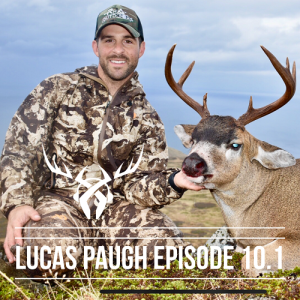
Wednesday Jan 02, 2019
Lucas Paugh R N A Outdoors podcast host 2018 season recap 10.1
Wednesday Jan 02, 2019
Wednesday Jan 02, 2019
Lucas Paugh R N A Outdoors podcast host 2018 season recap 10.1
Lucas is the host of RnA Outdoors podcast and is quite the accomplished hunter. He shares with us his 2018 season Hunting in Africa, Montana, California and more. check out Lucas' podcast
Download and Subscribe to Interviews With The Hunting Masters Big Game Hunting Podcast brought to you by Sneek Tec Sneak Boot Hunt Smarter and be deadly quite! on iTunes, Podbean,
Player FM or Sticher. It's FREE!
Help keep this podcast free and give us review on Itunes and leave us a comment to let us know how we are doing !
www. Johnstallone.me
https://www.instagram.com/johnstallone/
#daysinthewild
#johnstallone
#interviewswiththemasters
#hunting
#elkhunting
#deerhunting
#biggamehunting
#archerypractice
#spotandstalk
#muledeerhunting
#couesdeer
#couesdeerhunting
#ibexhunting
#antelopehunting
#whitetailhunting
#bowhunter
#bowhunting
#johnstallone
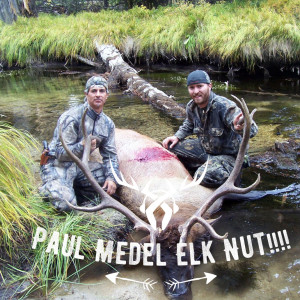
Wednesday Dec 26, 2018
Paul Medel Elk Stories 9.76
Wednesday Dec 26, 2018
Wednesday Dec 26, 2018
Paul Medel Elk Stories 9.76
Paul Medel of Elk Nut Outdoors shares with us some of his favorite elk hunting stories.
Elk Hunting Podcast, elk hunter, elk hunting
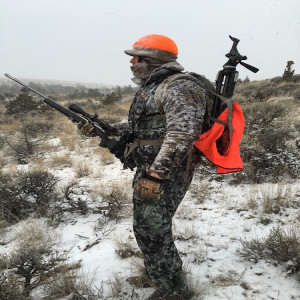
Monday Dec 17, 2018
Long Range Optics , Long Range Rifles, and Hunting Stories 9.75
Monday Dec 17, 2018
Monday Dec 17, 2018
Long Range Optics , Long Range Rifles, and Hunting Stories 9.75
We talk to the guys over at Best Of The West and Huskemaw optics some good info in this one
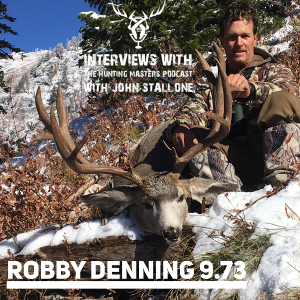
Monday Dec 10, 2018
Robby Denning 2018 Monster Muley 9.74
Monday Dec 10, 2018
Monday Dec 10, 2018
Robby Denning 2018 Monster Muley 9.74
Robby and I discuss some of the issues we are facing within the hunting community and we talk about his 2018 Idaho monster muley.
Download and Subscribe to Interviews With The Hunting Masters Big Game Hunting Podcast brought to you by Sneek Tec Sneak Boot Hunt Smarter and be deadly quite! on iTunes, Podbean,
Player FM or Sticher. It's FREE!
Help keep this podcast free and give us review on Itunes and leave us a comment to let us know how we are doing !
www. Johnstallone.me
https://www.instagram.com/johnstallone/
#daysinthewild
#johnstallone
#interviewswiththemasters
#hunting
#elkhunting
#deerhunting
#biggamehunting
#archerypractice
#spotandstalk
#muledeerhunting
#couesdeer
#couesdeerhunting
#ibexhunting
#antelopehunting
#whitetailhunting
#bowhunter
#bowhunting
#johnstallone
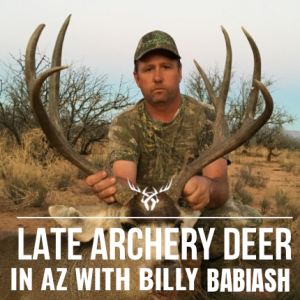
Monday Dec 03, 2018
AZ late season archery talk with Bill Babiash of Let'er Rip Outfitters 9.73
Monday Dec 03, 2018
Monday Dec 03, 2018
AZ late season archery talk with Bill Babiash of Let'er Rip Outfitters
Billy is a late season archery Guru his outfit specializes in those December and January hunts in southern Arizona Ive know Billy for a lot of years and have even worked for him in the past and he always manages to get a nice buck each year no matter how little time he gets to hunt. He has made his bones hunting those late archery deer hunts in southern AZ.
In this episode we cover:
*the rut differences from central to southern AZ
*the differences between the coues and mule deer rut
*some tactics to being successful
*some things a hunter should be doing to be successful in late archery hunts in AZ
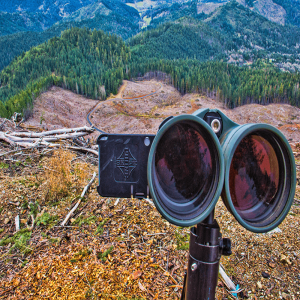
Monday Nov 26, 2018
Cheston Davis campfire session 9.72
Monday Nov 26, 2018
Monday Nov 26, 2018
Cheston Davis campfire session 9.72
Chaston share with me some of his favorite memories in the field and why he does what he does...
Download and Subscribe to Interviews With The Hunting Masters Big Game Hunting Podcast brought to you by Sneek Tec Sneak Boot Hunt Smarter and be deadly quite! on iTunes, Podbean,
Player FM or Sticher. It's FREE!
Help keep this podcast free and give us review on Itunes and leave us a comment to let us know how we are doing !
www. Johnstallone.me
https://www.instagram.com/johnstallone/
#daysinthewild
#johnstallone
#interviewswiththemasters
#hunting
#elkhunting
#deerhunting
#biggamehunting
#archerypractice
#spotandstalk
#muledeerhunting
#couesdeer
#couesdeerhunting
#ibexhunting
#antelopehunting
#whitetailhunting
#bowhunter
#bowhunting
#johnstallone
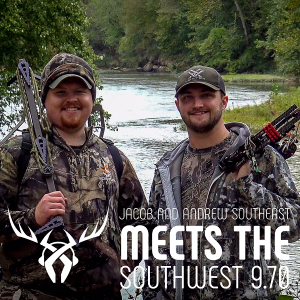
Monday Nov 19, 2018
The SW meets the SE Creating Hunting Opportunities 9.71
Monday Nov 19, 2018
Monday Nov 19, 2018
The SW meets the SE Creating Hunting Opportunities 9.71
In this episode I Talk with the Guys from The Southern Outdoorsman Podcast and discuss creating opportunity out of state to extend your hunting season. Jacob Myers and Andrew Maxwell are boys from the Southeast that love hunting and talking about hunting. They share with me some of the logistics involved in planning a hunt in the southeast some of the different tatcics a you can employ and some tips on how to be successful on a DIY hunt back east.
Check out their youtube Channel
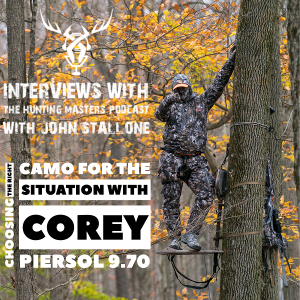
Wednesday Nov 14, 2018
LAYERING CAMO AND DRESSING FOR THE OCCASION With Corey Piersol of Sitka Gear 9.70
Wednesday Nov 14, 2018
Wednesday Nov 14, 2018
LAYERING CAMO AND DRESSING FOR THE OCCASION With Corey Piersol of Sitka Gear 9.70
Corey Piersol and I discuss choosing the right camo for your hunt and some of the new stuff Sitka has to offer
WHAT CAMO SHOULD I WEAR TODAY?
LAYERING CAMO AND DRESSING FOR THE OCCASION: WHAT CAMO SHOULD I WEAR, WHAT’S THE BEST CAMO CLOTHING FOR THIS TRIP?
We are often asking ourselves What camo should I wear ?, What’s the best camo clothing for this trip? What should I bring with me? Layering and dressing for the weather is almost an art-form in itself, let me start with this: it may sound funny but when you look good , you feel good and when you feel good, you perform good. That being said the most important thing you can do for your hunting success is to spend more time in the field and in order to do that you need to be comfortable. I have spent many years trying different ways to stay comfortable and have tried all the latest and greatest the outdoor industry could come up with and I have basically made myself a chart for layering so I know how to dress and keep myself comfortable and be able to adjust on the fly. Now I use Sitka gear (because that’s what works for me) and this is not a sales pitch for Sitka but for the sake of examples I will be using their components you can adjust your chart accordingly . It would be nice if we could all afford all the specialized pieces and have new sets of fresh camo for each day of hunting but I do the best I can with what I got.
Glassing in Kelvin Hoody
Spot and Stalk Hunts
Temp Range
70-110 deg
60-70
50-60
40-50
30-40
20-30
0-20
Rain
wind
Ascent Light pants
x
x
x
Ascent Light shirt
x
x
Merino base layer top
x
x
x
x
x
x
Merino base layer bottom
x
x
x
x
Mid weight base layer pant
x
Mid weight base layer Zip T
x
Heavy weight Bottom
x
Heavy Weight Top
x
x
x
Mountain Pants
x
x
x
x
Kelvin Light hoody
x
x
Mountain vest
x
x
x
x
Traverse Jacket
x
Storm front jacket/pants
x
Sitting/ tree stand hunting
Temp Range
70-110 deg
60-70
50-60
40-50
30-40
20-30
0-20
Rain
wind
Ascent Light pants
x
x
x
Ascent Light shirt
x
x
x
Merino base layer top
x
x
x
x
x
x
Merion base layer bottom
x
x
x
x
x
Mid weight base layer pant
x
x
Mid weight base layer Zip T
x
x
Heavy weight Bottom
x
x
x
Heavy Weight Top
x
x
x
Stratus Pants
x
x
x
x
x
Stratus Vest
x
x
x
x
Down Pour jacket
x
x
Celsius Jacket
x
x
x
SPOT AND STALK HUNTS BEST CAMO CLOTHING
I’m going to start with the 50-60 degree range because that’s where the layering starts for me I like to use merino close to my skin its very comfortable and regulates body temp well, when I sweat I’m less stinky then when I wear a synthetic next to my skin and plus it breathes well. I also prefer merino because there is little to no “shine” a lot of synthetic cloths although very technical and perform well as a protection garment tend to reflect light that game will pick up on so when I go on a stalk I almost always strip down to my merino top. Most of the time in this temp range the LS ascent shirt stays in my pack I wear it in the early morning for that extra warmth or as an additional wind break but where it comes in the handiest is late in the day when its the hottest and I have been wearing the merino all day I switch into a fresh shirt if I need to.
40-50 Now I introduce the merino bottoms and the mid weight Zip T top, I also have switched to mountain pants and started packing a mountain vest. While hiking around I usually lose the vest and the Zip T get to my morning glassing spots let my body cool down and most of the sweat evaporate then put them back on. However If its windy I may hike with the vest on or if the hike is light I may wear the Core Mid weight Zip T on the hike in. Again while I’m on a stalk I generate so much heat that being cold is never really and issue however let me caution you make sure to take your pack with you on a stalk and have the vest etc. in there because many times stalk go from intensive hiking and maneuvering into position to waiting hours in the cold.
30-40 this is that tricky zone because its starting to get pretty darn cold but you can still get very hot while hiking and stalking. I switch from the mid-weight Zip T to the Core Heavy Weight Zip T and I Introduce the Kelvin Light Hoody to the mix. Again I sound like a broken record but you see the pattern here strip down for times of high activity suit up for low activity
20-30 its fricken cold I’m generally hiking in without the jacket I may wear the vest and depending how far I need to go sometimes I will still lose the vest for the hike. While stalking I typically will wear the vest just so I don’t have go back and forth too many times wasting time or cause unnecessary movement.
0-20 I shouldn’t be out here but the bucks are rutting hard and the cold has them up on their feet. I start packing around the traverse jacket with me and when I’m stationary I will keep the vest on underneath my jacket, while moving I will wear the vest and lose the jacket. I have also put on the heavy weight bottoms and top over my merinos .
For wind and rain between 50- 110 I always pack the storm front jacket 50 degrees and colder the pants go in there too. I will also use this jacket for its wind breaking capabilities to go over whatever else I’m wearing nothing worst then getting pounded by the wind high up on a ridge top. What camo should i wear, best camo clothing
TREESTAND HUNTING OR STATIONARY AMBUSH HUNTING BEST CAMO CLOTHING
Stand hunting its pretty much the same concept when I hike into my stand in the morning I shed all the heavy stuff and put it on after I get there. One trick I learned is to bring a small wash cloth (dry) in a zip lock bag which I use to towel off any sweat then I put the sweaty towel back in my bag spray down and put my layers on best camo clothing
For the early season I just use my Ascent pants they work well for those early hunts and it saves me some money not having to own separate sets. its not till we get to the colder weather that I need the specialized whitetail gear that is designed to be quiet and to keep you comfortable while sitting for long periods.
There is far less having to layer up and layer down while you are in the stand, but you do have the ability to adjust according to your comfort level. Again in preservation of my wallet and because hunting out of a treestand in very cold weather only makes up a small portion of my hunting, see I hunt all over the country for all different species, in different terrains and climates so I need my gear to be versatile and cover me across the spectrum. So instead of having some of the really nice cold weather bibs that sitka makes I compensate with layering which sometimes is a bit restrictive and cumbersome but it does the job. What camo should i wear, best camo clothingest camo clothing
Cold morning in Montana
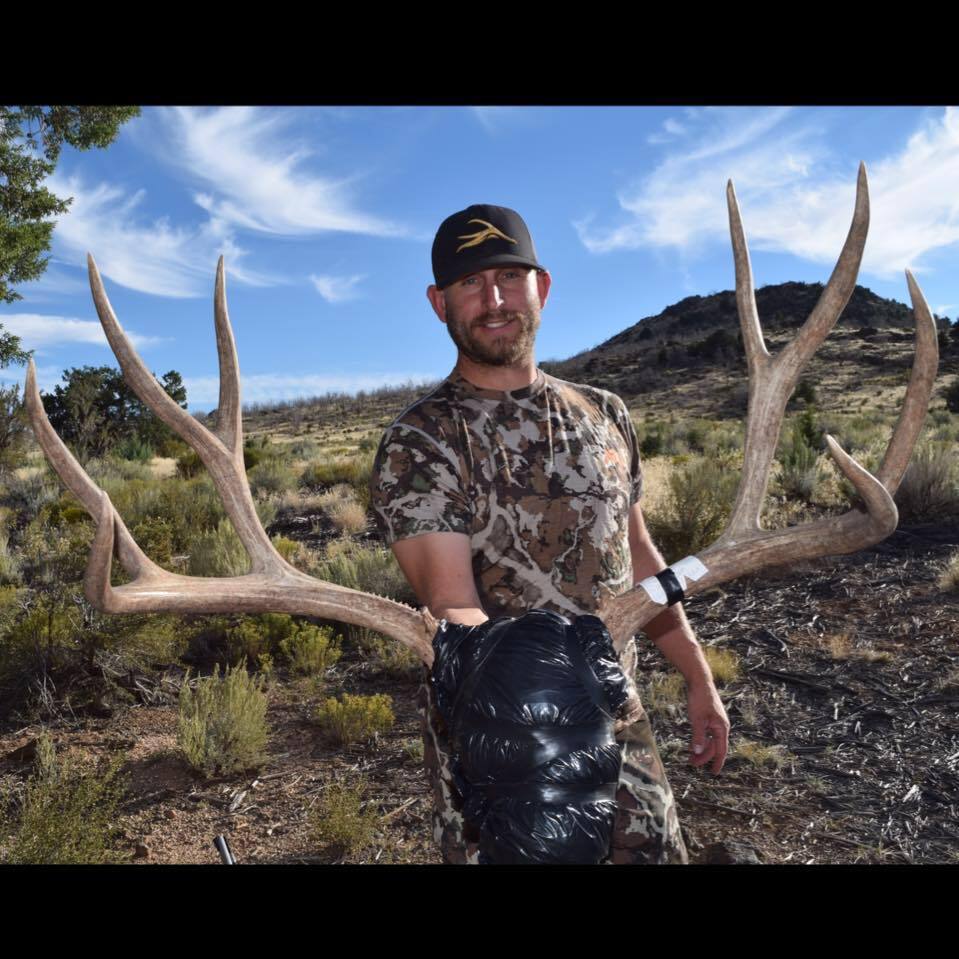
Monday Nov 12, 2018
Shooting The Shit With Josh Corbin "The Antler Trader" 9.69
Monday Nov 12, 2018
Monday Nov 12, 2018
Shooting The Shit With Josh Corbin "The Antler Trader" 9.69
Josh and I talk about hunting out of state, scouting, and just having a good time in the field.
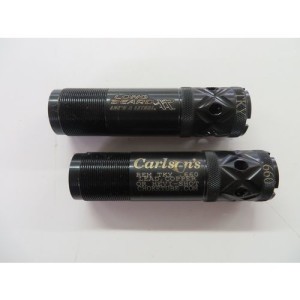
Monday Nov 05, 2018
Choke tubes what you should know with Shane Carlson 9.68
Monday Nov 05, 2018
Monday Nov 05, 2018
Choke tubes what you should know with Shane Carlson 9.68
Most ammo and choke combinations will pattern differently. Using a Performance Choke Tube is a great place to start, but don't forget to go to the range and pattern your shotgun for the load and choke you intend to use. Changes in loads or chokes will change your patterns. Shane Carlson goes over with us how to choose the right set up for your scatter gun..
Check out Carlson Choke tubes http://www.choketube.com/










